Description
This multi-day cycling route in eastern Luxembourg lives up to its name: it follows along the three rivers Moselle, Sauer and Alzette and offers detours to Schengen and Vianden.
Wine is as much a part of Luxembourg as the Echternach spring procession. This excursion in eastern Luxembourg takes us to the Moselle, through the heart of Luxembourg viticulture. Steeply sloping vineyards and small winegrowers' villages that have preserved the charm of bygone days line the way. A detour to Schengen, where the Schengen Agreement for the gradual removal of border controls was signed, and to the nature reserve "Haff Réimech" near Remerschen is definitely worthwhile (+20km). You cycle along the border with Germany on the Moselle and Sauer. A visit to the basilica in Echternach should definitely be planned. A detour to the impressive Vianden castle is also possible (+20km). The Alzette, the smallest of the three rivers you cycle along, takes you back to Luxembourg City.
The route can also be shortened. From Echternach, the national cycle path (PC2) runs via Consdorf and Junglinster to Luxembourg City. However, this section is more demanding due to many elevation meters.
Directions
Our tour starts on the bridge over the Alzette in Luxembourg-Grund, where we have a wonderful view of a part of Luxembourg’s old town. We ride into the "Bisserwee," from where we follow the official cycle path PC1 that takes us to Hesperange Park. There, we cycle through to the campsite. We turn left into Rue du Camping and encounter the Route de Thionville (N3), which we cross. We are now on Rue de Syren (CR154) in Alzingen, which we follow out of the town towards Syren. We follow CR154 up to the hill just before Syren and then turn right onto the field path towards Hassel (marked by bike route signs). From Hassel, the route is marked with "bicycle pictograms" on the road. We follow Rue des Champs and turn right towards Dalheim into the street "Killebierg," then right again into "Rue de Dalheim" (CR162), which leads us out of town. After the last houses of Hassel, we take the first right field path towards Filsdorf. There we cycle to the N13, which we then cross. We pass the church and continue on the street "Am Eck" until we can turn right into the street "Am klengen Eck." We cross CR162 and continue on Lächewee (CR155) to Dalheim. Shortly before the town, we meet the N13 again, which we follow to the right for 200 meters, then turn right into a field path leading towards Ellange. At the main road, we turn right, pass the church and turn left into "Rue du Cimetière." We reach Ellange-Gare, where we turn left onto bike path PC7. The bike path follows the former narrow-gauge railway "Jangeli," which once ran from Luxembourg City via Mondorf-les-Bains to Remich. The beautiful route leads first through the forest and then past vineyards to the Moselle town of Remich. We pass the cemetery and take the second exit at the roundabout, Rue de la Gare. We pass the church, behind which we turn right into Rue de l'Eglise. After about 50 meters, we turn half-right into Avenue Lamort-Velter (CR152), which takes us out into the vineyards and later down to the Moselle bank. There we meet the national cycle path PC3.
Detour to Schengen (about 20km round trip): We follow PC3 on the banks of the Moselle upstream to Schengen. This bike path runs along the "route du Vin" (CR152), which leads out of the town and past Schwebsange to Remerschen. Here you can turn off to the nature reserve "Haff Reimech" and reach the leisure gravel pit lake. A visit to the nature preservation center "Biodiversum" is worthwhile, and opposite you can swim or take a break in the restaurant. Also, the youth hostel in Remerschen is certified with the "bed+bike" label and thus offers a nice place to stay overnight. The bike path continues to Schengen, where you can find information about the "Schengen Agreement" in the European Museum.
From Remich, our tour follows the PC3 bike path downstream along the river towards Grevenmacher. We pass Stadtbredimus, Ehnen, Wormeldange, Ahn, Machtum, and reach Grevenmacher. It is worthwhile to visit the small villages. Ehnen has a beautiful small old village center, and Grevenmacher also has some lovely spots near the church. You should also stop at the "Map and Printing Museum" in Grevenmacher, where you can refresh yourself with drinks and food. The butterfly garden is a real discovery for friends of beautiful butterflies. Then we follow the bike path downstream to Mertert. There we ride past the harbor facilities and turn right to follow the Syr River along to its mouth into the Moselle. Then it goes from one mouth to another, the Sauer into the Moselle, from where we continue cycling on PC3 along the Sauer.
The route takes us through Born, Rosport, Steinheim to Echternach. Along the way, there are several nice places to stop for refreshments.
In Echternach, you should definitely enter the small town and visit the basilica. The Echternach spring procession on Pentecost Tuesday is a UNESCO World Heritage event.
Afterwards, we cycle past Weilerbach, Bollendorf-Pont, Grundhof, Dillingen, and Wallendorf-Pont to Reisdorf. Here PC3 meets PC16, which we follow towards Diekirch and Ettelbrück.
Detour to Vianden (about 20km round trip): A detour along PC3 towards Vianden is definitely worthwhile, even though the route is somewhat more demanding and includes a section on a less busy road. Vianden, the medieval town with its beautiful castle, invites you to explore and linger.
Our path continues past Moestroff and Gilsdorf to Diekirch. The bike path takes us through the southern district of the Sauer. Diekirch has a nice small pedestrian zone with several restaurants, bars, and terraces. Along the riverbank, we continue to Ingeldorf, where we cross the river and ride a stretch along the northern bank before crossing to the other side to Ettelbrück. We follow the signs of PC16, which leads us along the riverbank to the sports center. Here PC16 ends and transitions into PC15, the bike path that takes us along the Alzette riverbank to Luxembourg City. This bike path mostly follows the railway line, so you can also simply change to the train towards Luxembourg City. We take the bridge over the river and are now back on a bike path that leads along the railway tracks from Mersch to Lintgen. The route is well signposted at all times, so we can follow it to Walferdange. In Walferdange, we reach "Rue de l'Eglise," where we turn right, which then becomes Rue Henri Dunant. We come to the sports field of FC Avenir Beggen, where we meet PC1 (turn left at the first intersection after the sports field). We turn right and go straight along the railway tracks until we reach Dommeldange. We pass the train station and follow the signs "Luxembourg-Grund." The route goes through Lavals Park, at the end of which we turn right and left onto the marked "bicycle street." At the end, in the Pfaffenthal district, is the panoramic elevator, which cyclists can also use. This takes you quickly right into the center of Luxembourg City. To reach the district Grund (Gronn), you ride from Pfaffenthal through rue "Sosthène Weis" (also a bicycle street), which takes you under the castle bridge back to the starting point of the tour.
Descriptions of towns and districts on the tour:
Kirchberg: Luxembourg’s Europe and banking district impresses not only due to its sheer size. Architecturally, the district is outstanding in the best sense – and several star architects have contributed to this remarkable ensemble. The latest piece in this mosaic is the Luxembourg Philharmonic, located just behind the "Rout Bréck" (Red Bridge). When crossing this structure, it’s worth looking back over the Alzette valley. From the bridge, you have a beautiful view of the old town of Luxembourg and the Pfaffenthal district.
Bollendorf-Pont: Like several other towns on the Sauer, Bollendorf was divided in 1815: the Congress of Vienna assigned the Bitburg area east of the Sauer, which belonged to Luxembourg, to Prussia. Thus, Bollendorf, on the eastern bank of the Sauer, belongs to Germany today. The castle there was once the summer residence of the abbots of Echternach.
Diekirch: The town, with about 6,800 inhabitants, together with Ettelbrück, Erpeldingen an der Sauer, Bettendorf, and Schieren forms the so-called "Nordstad," alongside Luxembourg City and Esch-sur-Alzette the third urban center of the country. Diekirch is considered the "cradle of Luxembourg tourism," not least because of its location on the southern edge of the Ardennes. The St. Laurentius Church, whose origins probably date back to the 4th century, is one of the oldest cult sites in the country.
Plateau du Saint-Esprit: The plateau at the confluence of the Alzette and Petruss once housed one of the numerous barracks of the fortress. The historic buildings were integrated into the new justice center, which now dominates the plateau. On the opposite side of the Alzette valley is the Rumm plateau, which formerly housed a military hospital of the fortress. Today the buildings house a nursing home. From Plateau du Saint-Esprit, it is only a few meters to the Notre-Dame Cathedral and the government district.
City Park: The "green lung" of the capital lies like a belt of recreation around the western edge of the old town. The park was laid out after the fortress was demolished in 1867 – where once stood the gigantic defensive structures of Luxembourg, which secured the west as the only vulnerable flank of the fortress.
Dalheim: South of town is one of the most important archaeological sites in the country: the Roman relay station "Ricciacus." Here, the Roman highways Metz-Trier and Lyon-Aachen once crossed. Besides thousands of coins, the excavations also brought to light a number of deity statues, two of which can now be admired in the Louvre in Paris.
Ellange: The village, with just over 300 inhabitants, lies idyllically on the heights above the Moselle. Beautifully restored farmhouses and a lovely parish church give the village its charm.
Remich: The Celts and Romans already valued this place on the Moselle. From the Roman "Remacum," it has become a wine center and one of the most popular Luxembourg tourist destinations. The town still has a medieval ambiance, and some of the numerous wineries invite visitors for tours.
Bech-Kleinmacher: The typical winegrowing village on the Moselle houses the wine and folklore museum "A Possen." The former vintner’s house gives visitors an insight into the life and work of vintners from days gone by.
Remerschen: The village lies between steeply rising vineyards and the "Baggerweiere." This nature reserve, consisting of several former gravel ponds, attracts not only nature lovers but also many water sports enthusiasts and bathers.
Grevenmacher: The small town, with just under 5,000 inhabitants, still guards an important crossing over the Moselle – even though the fortress that once protected Luxembourg territory has long been destroyed. A visit to the butterfly garden is a must.
Echternach: One of Europe’s oldest sites of Christianization and culture. Saint Willibrord of Northumberland founded a Benedictine abbey here in 698, which in the 10th and 11th centuries developed into an artistically excellent school of painters and scribes. Today the Echternach Lyceum is located in the buildings. The impressive Willibrord Basilica is considered the most important religious monument in the country. Built in the 11th century, it was rebuilt after severe destruction in World War II in its original Romanesque style.
For your safety
Near Dalheim, the route runs for about 200m along a heavily trafficked road (N13).
Mixed traffic occurs on some sections.
Journey
Arrival by public transport is possible. The use of public transport is free of charge. Bicycles can only be transported on designated storage areas in trains and regional buses. More information at: www.mobiliteit.lu
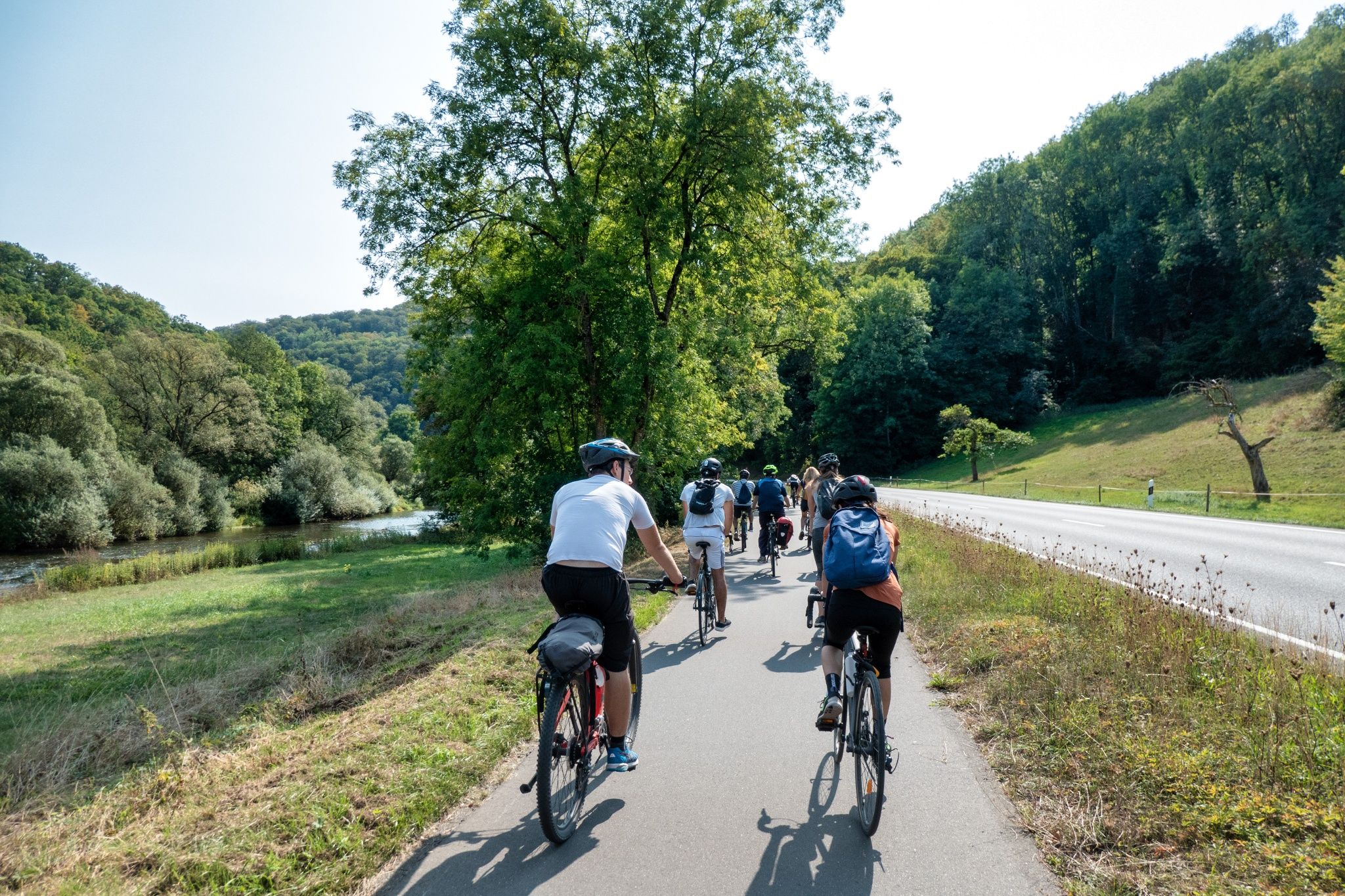

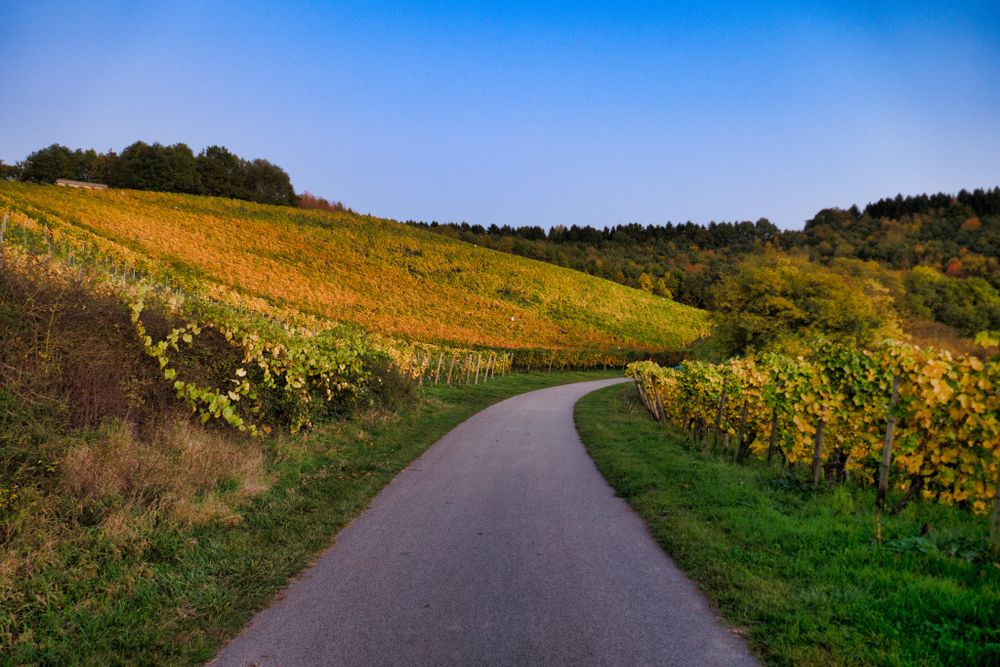
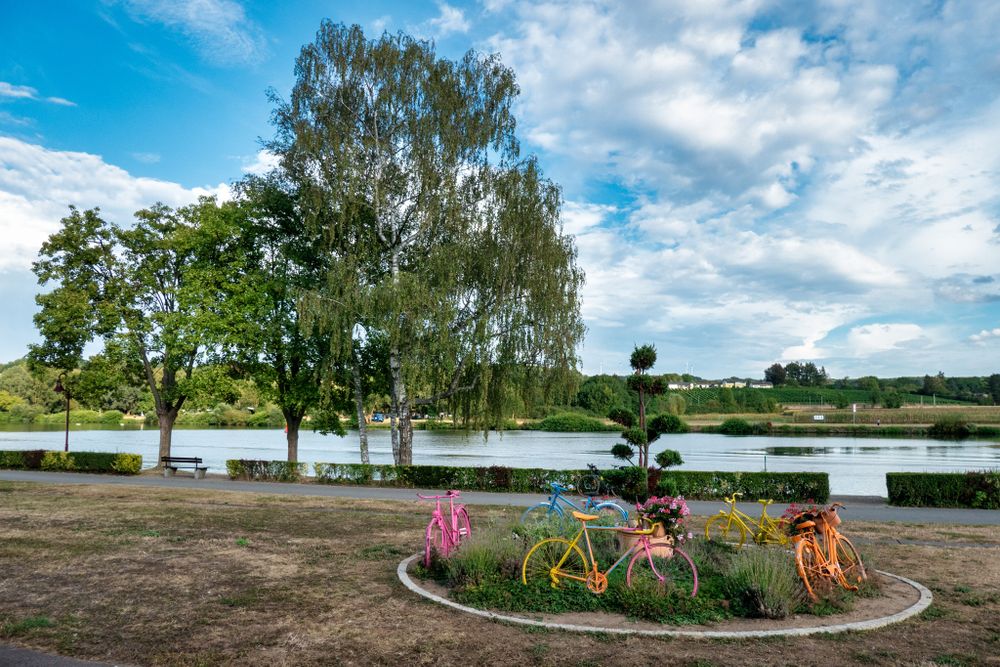
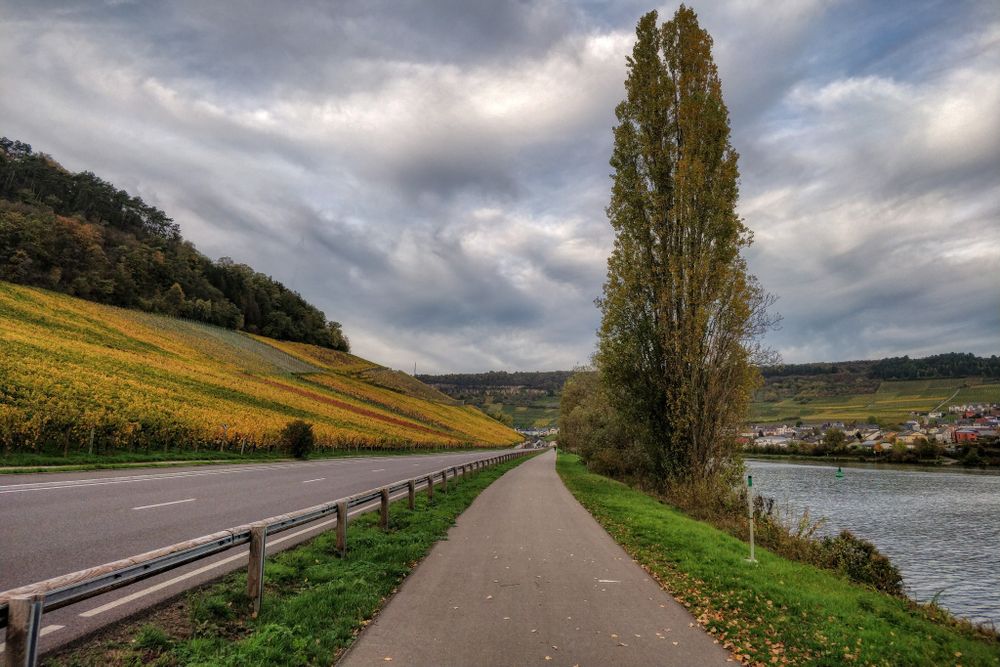
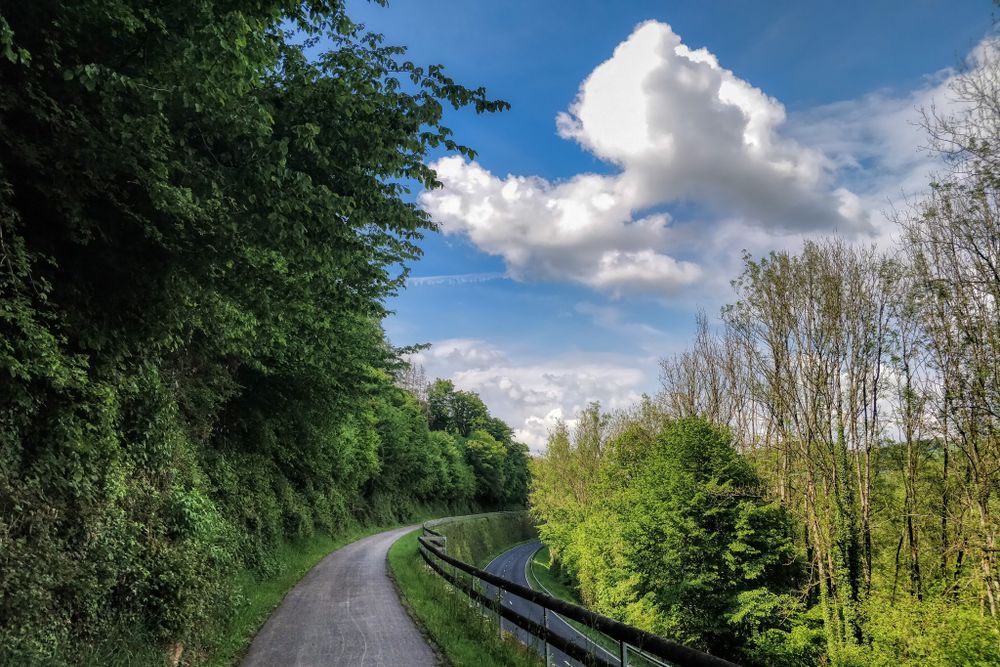
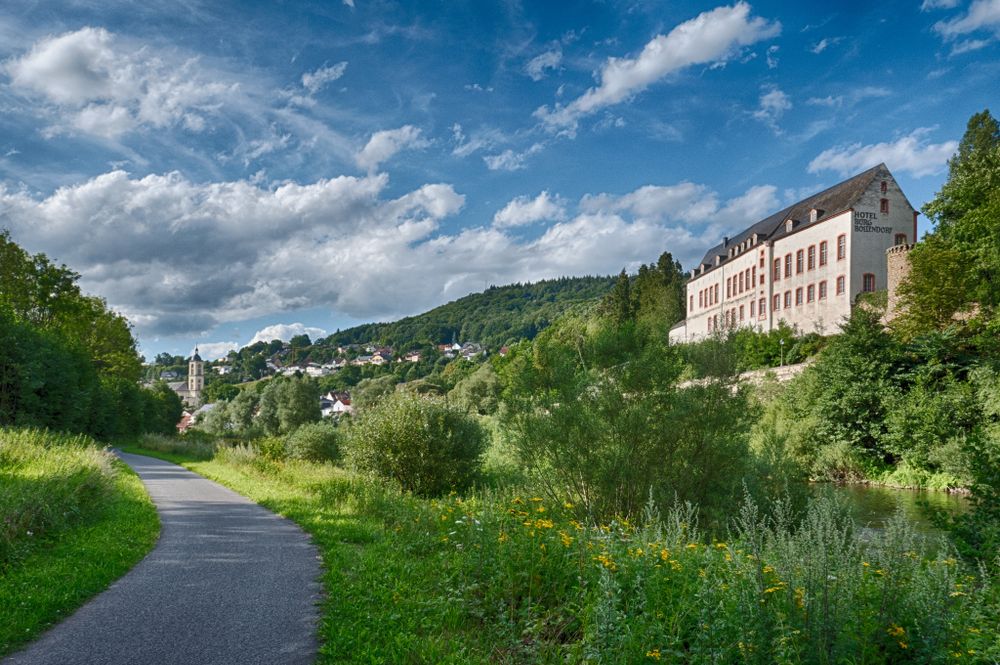
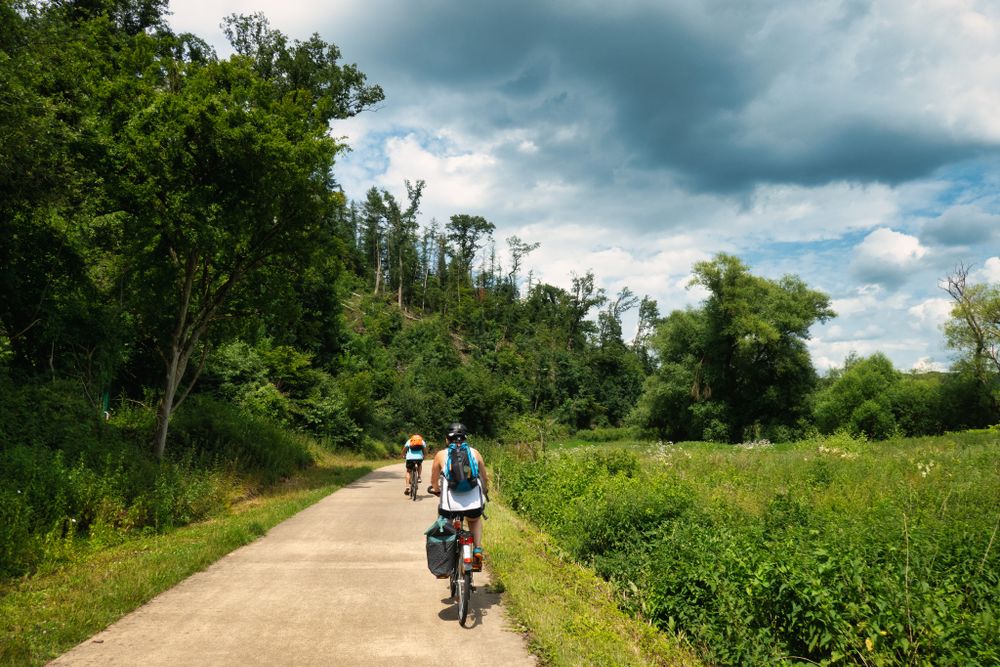
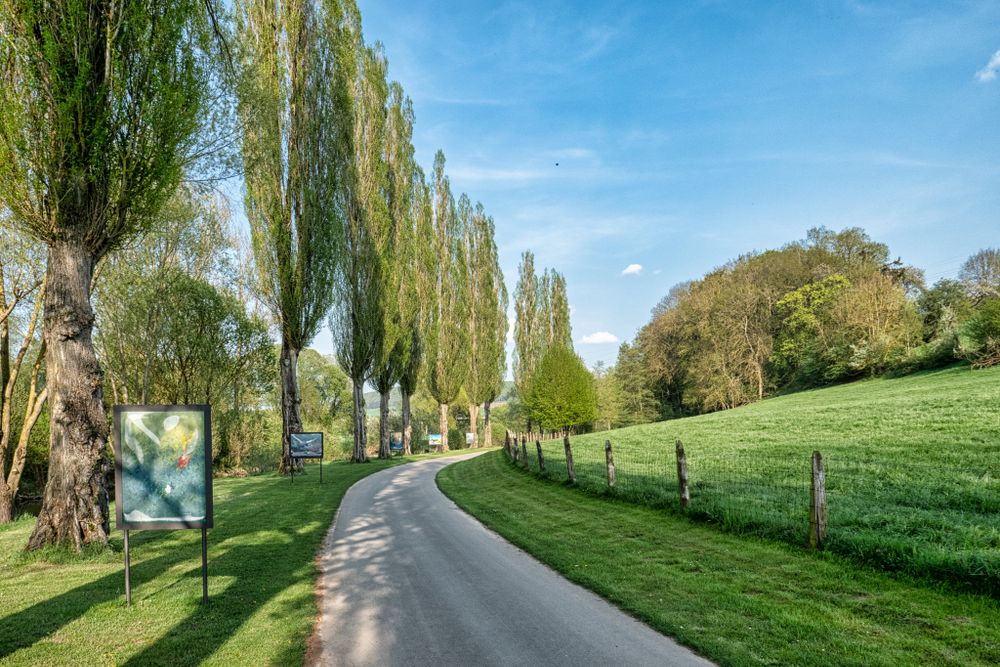
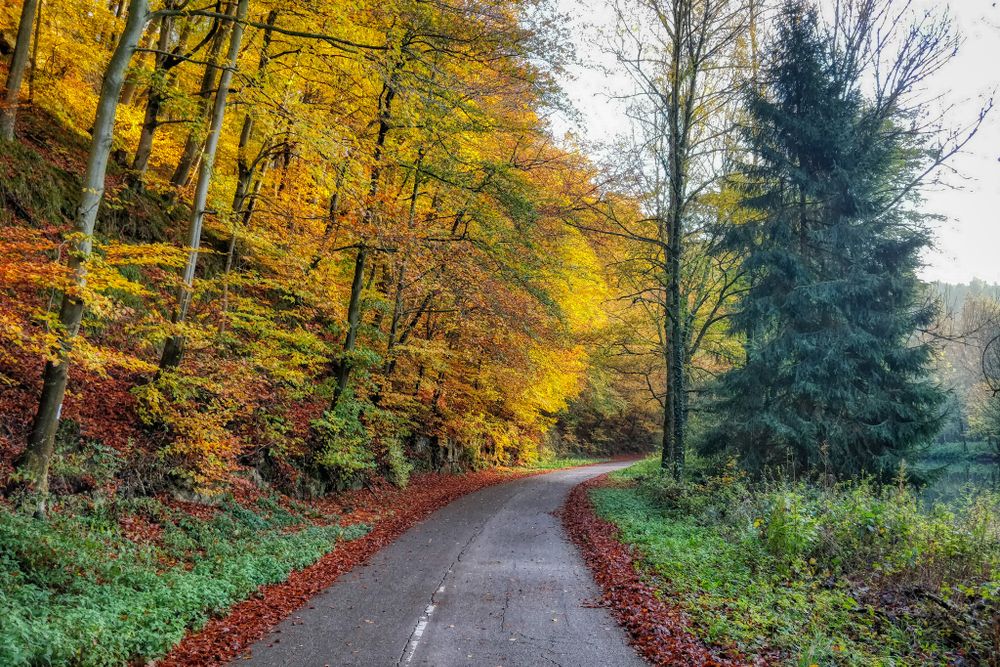
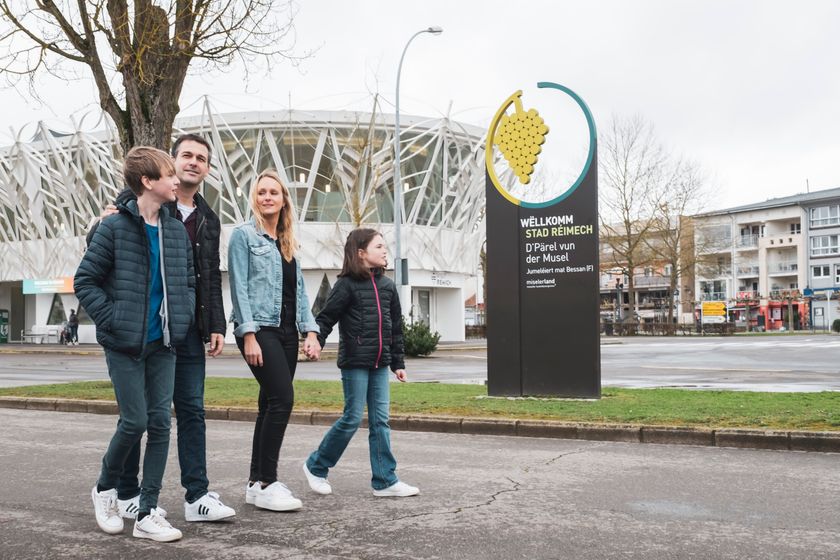
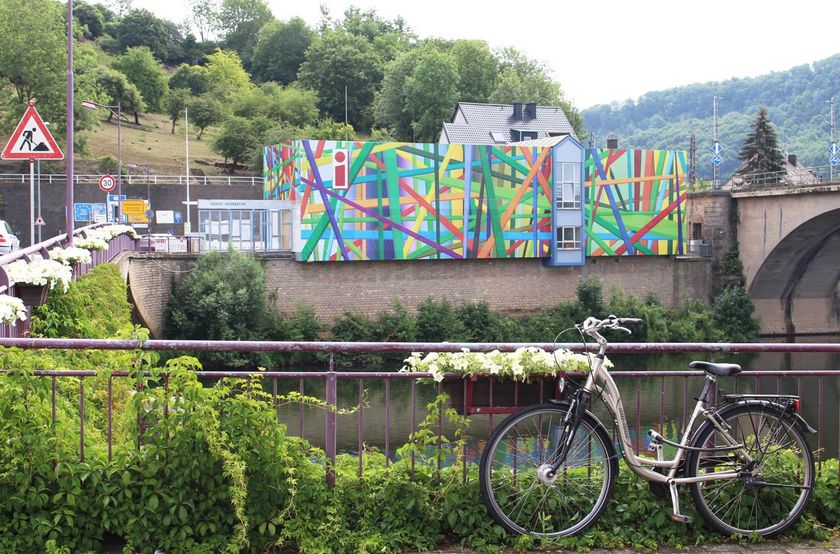
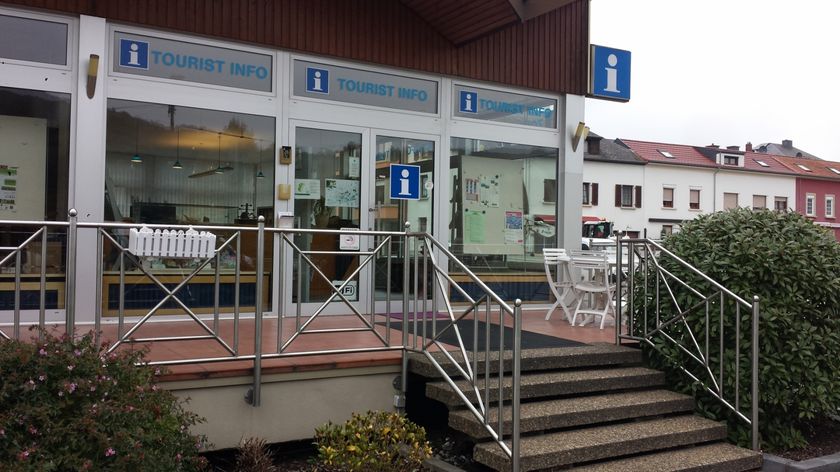
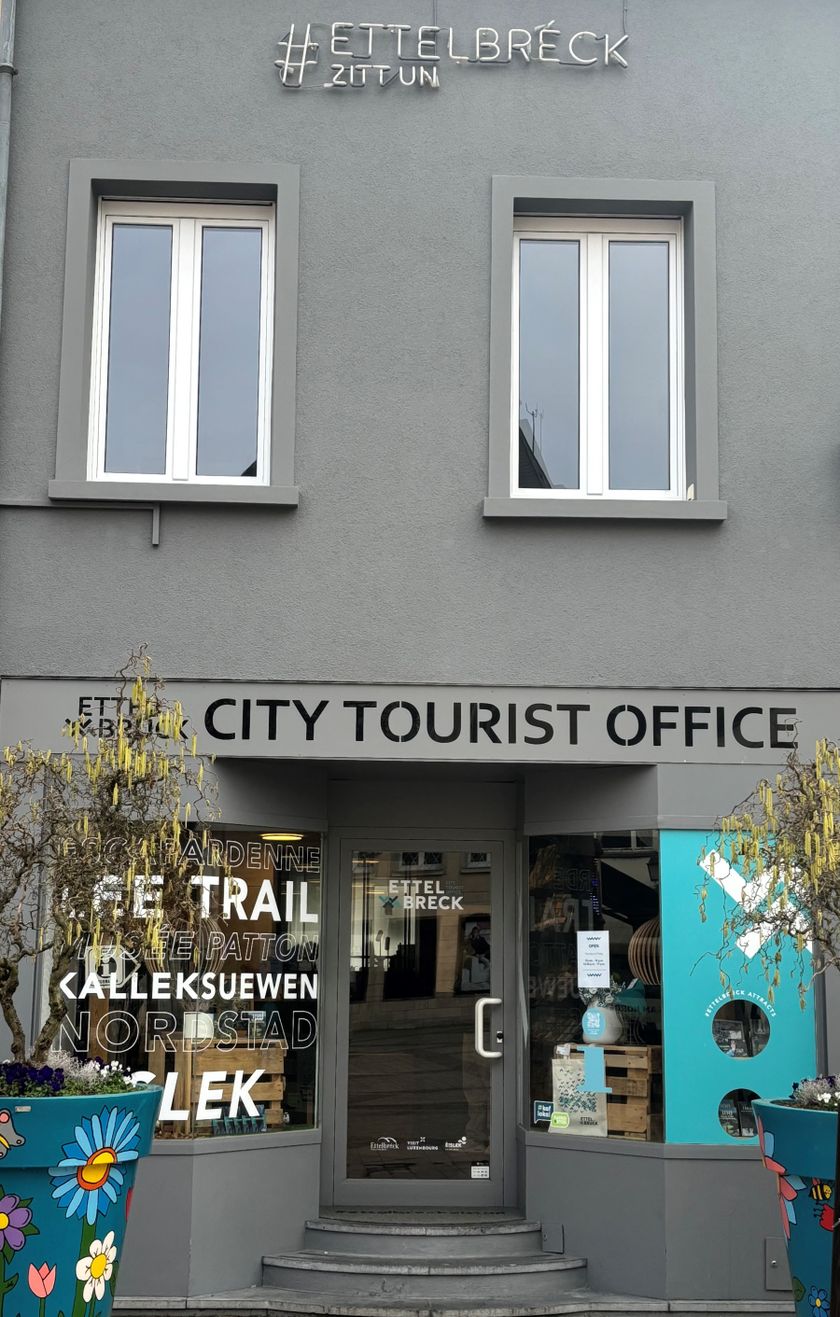
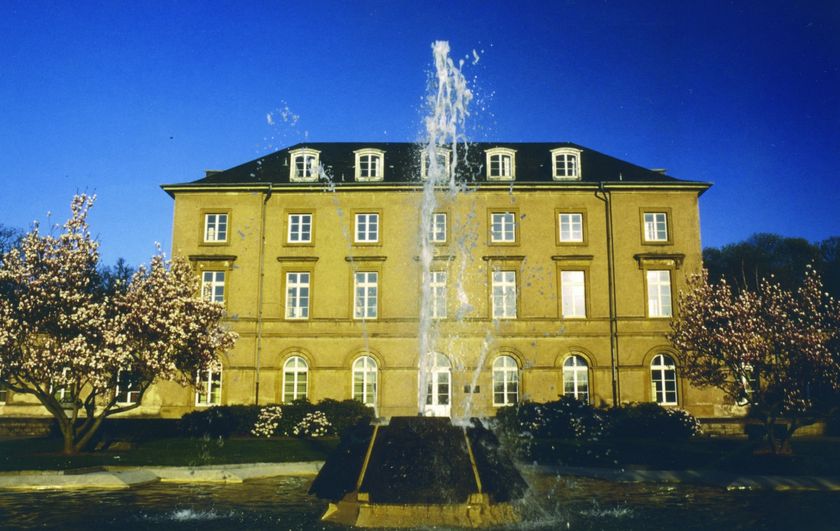
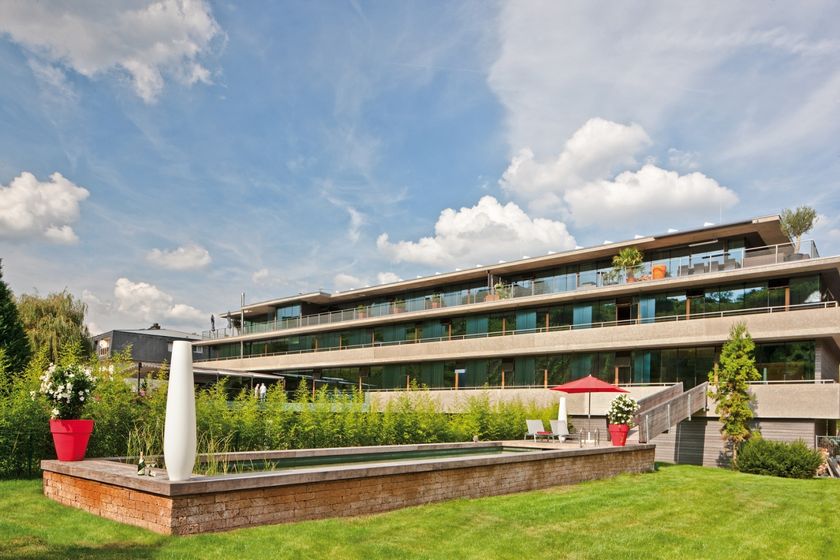
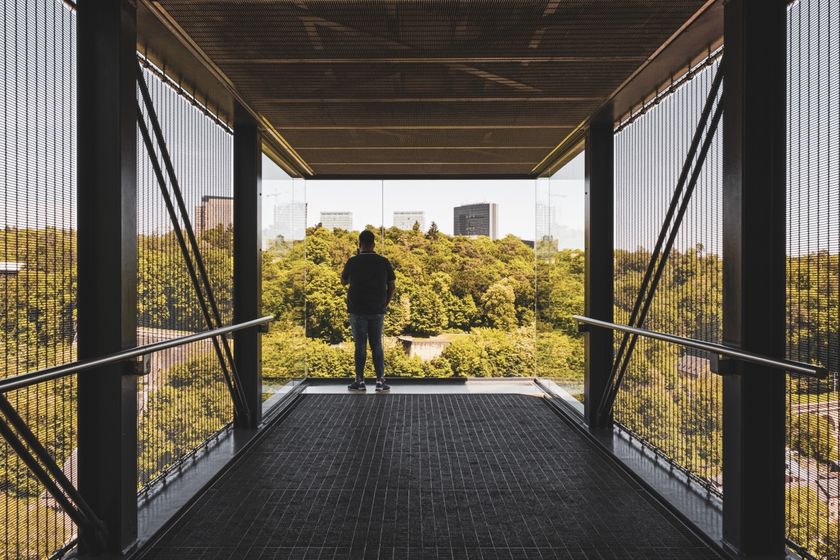
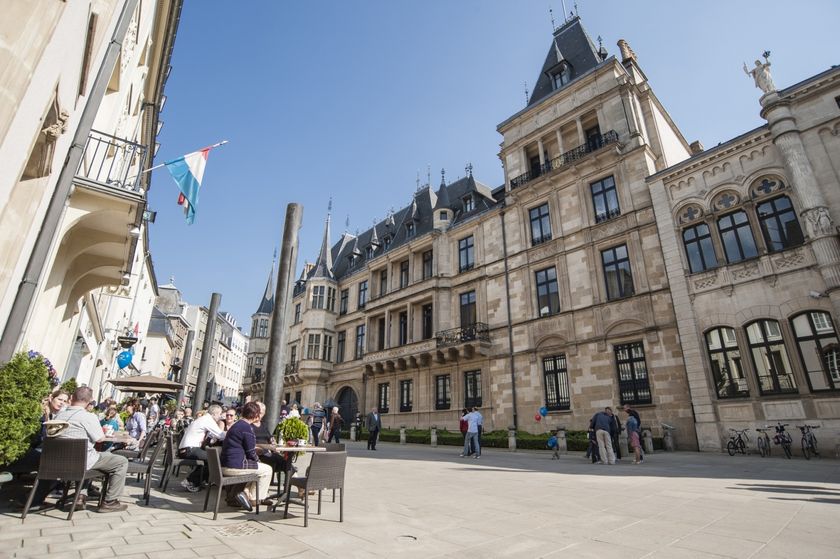
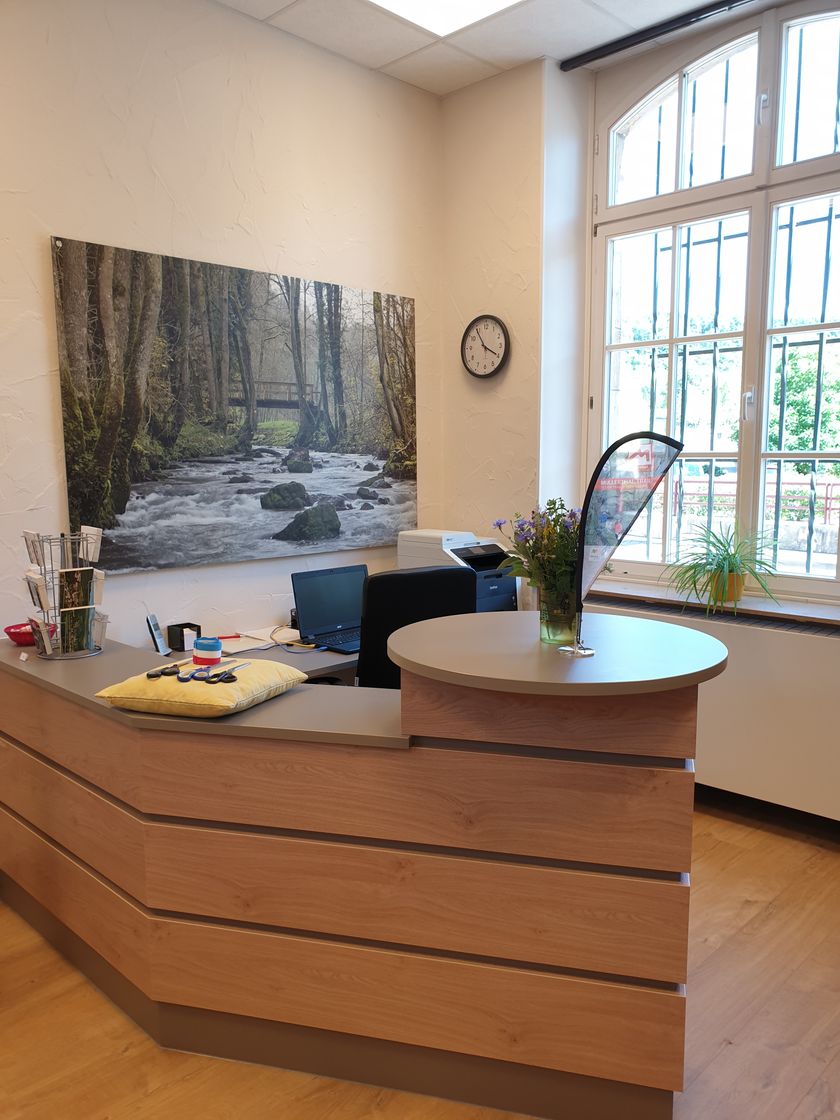
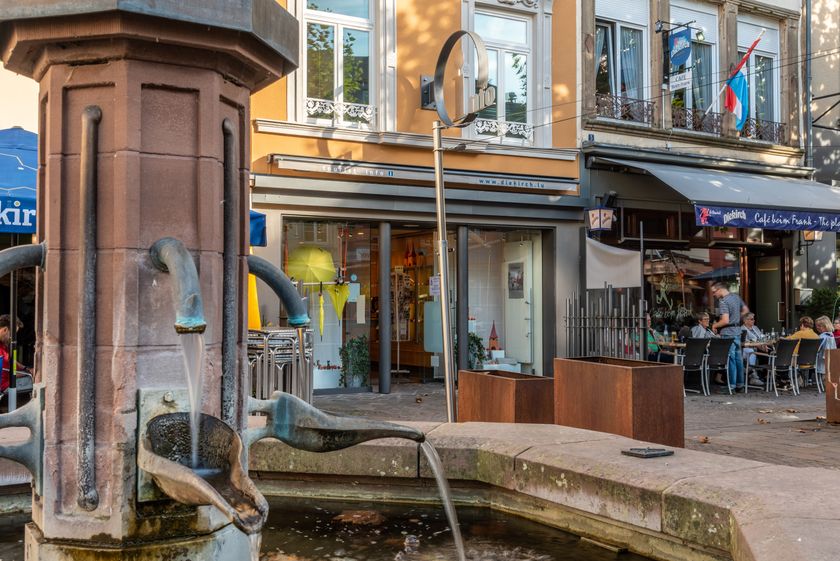
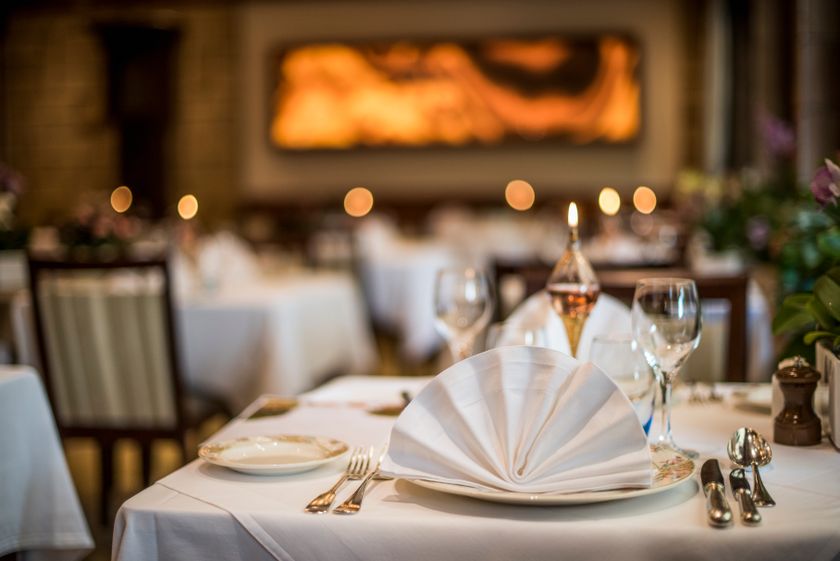
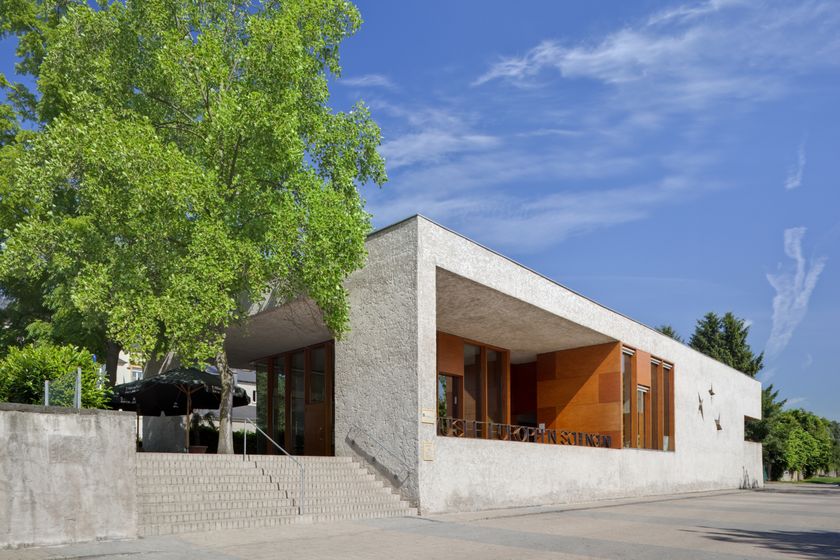
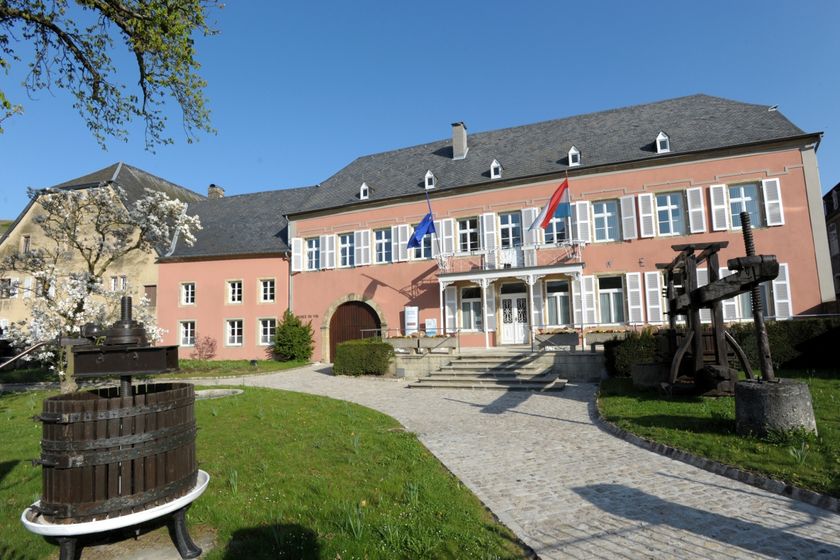
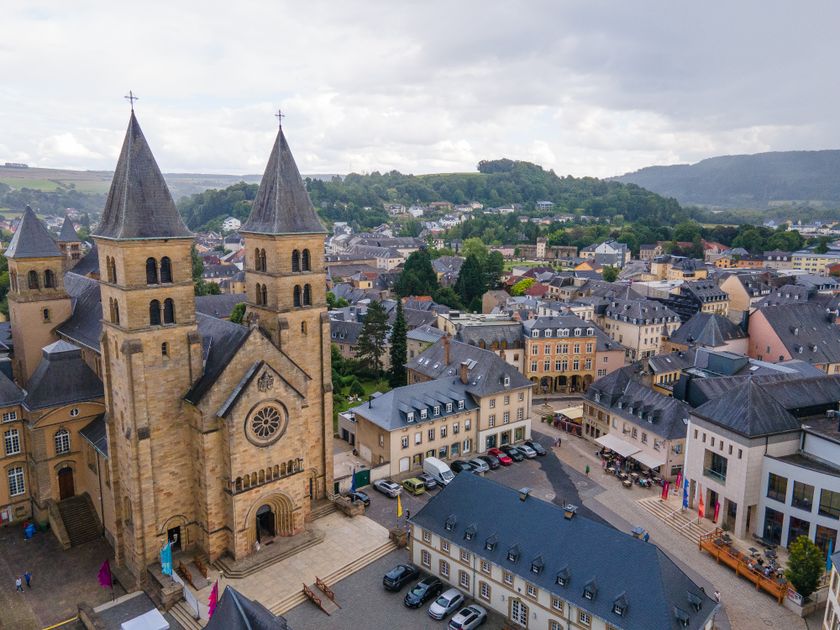
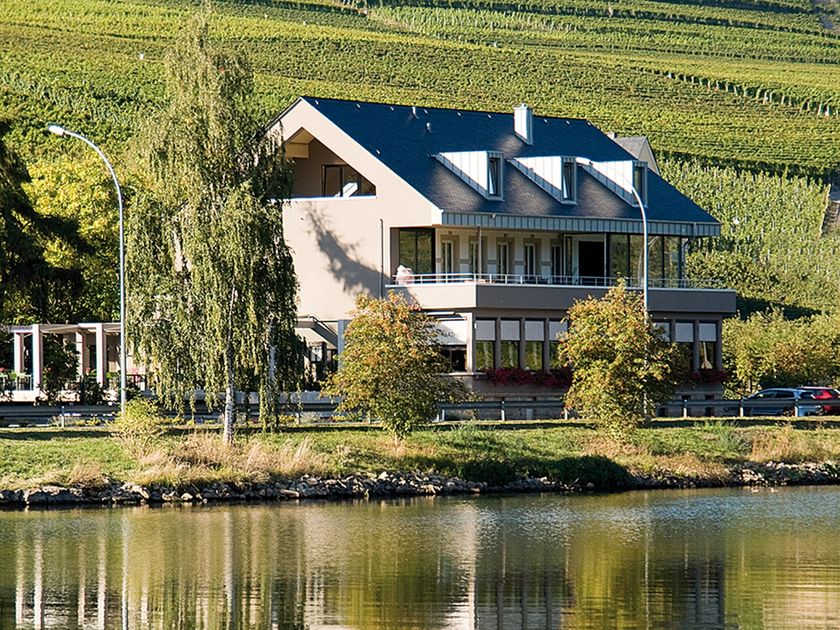
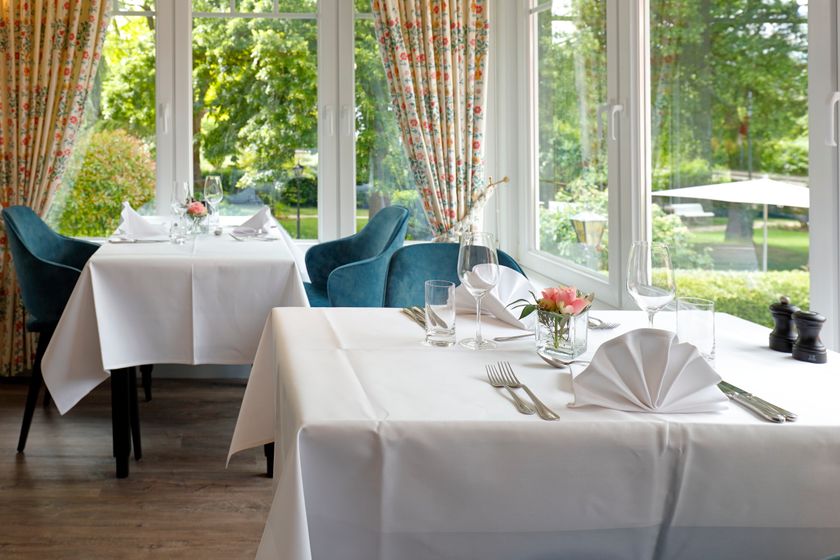
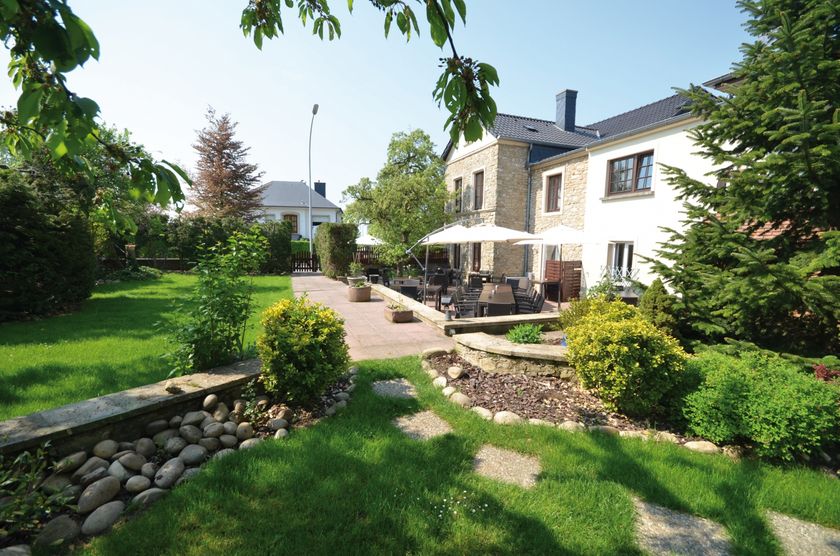
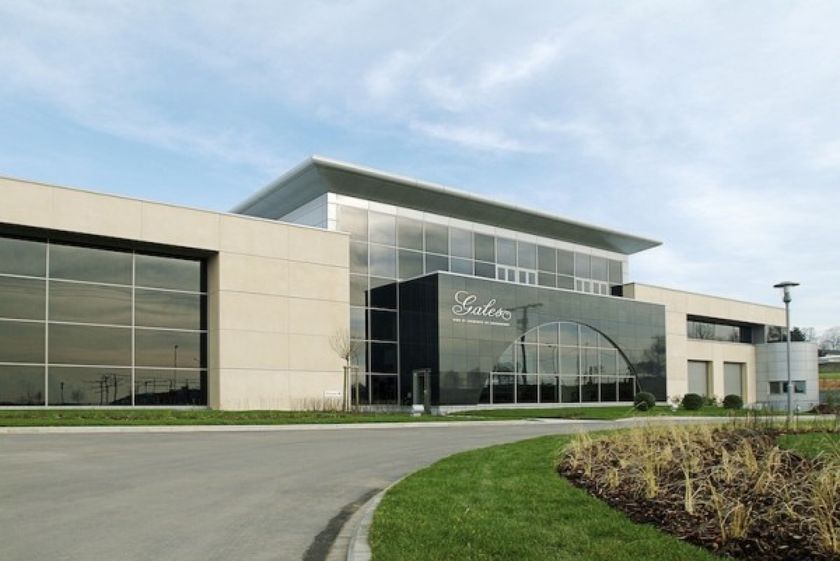
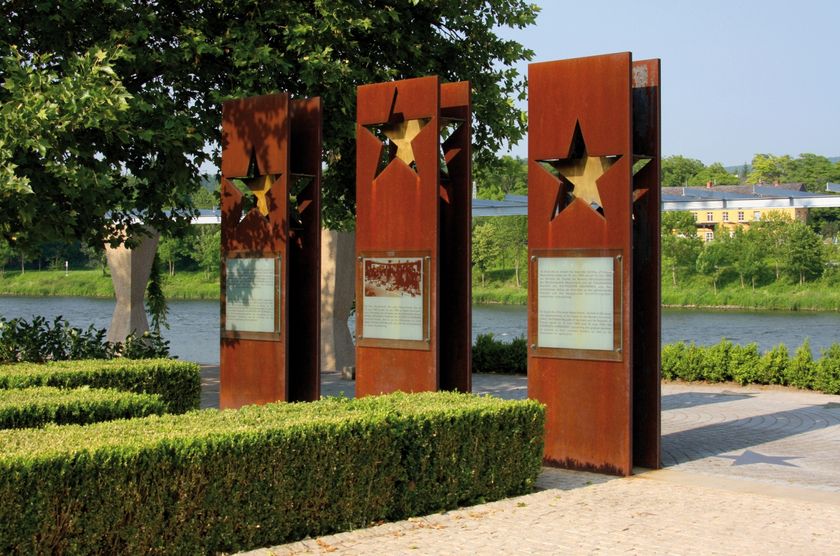
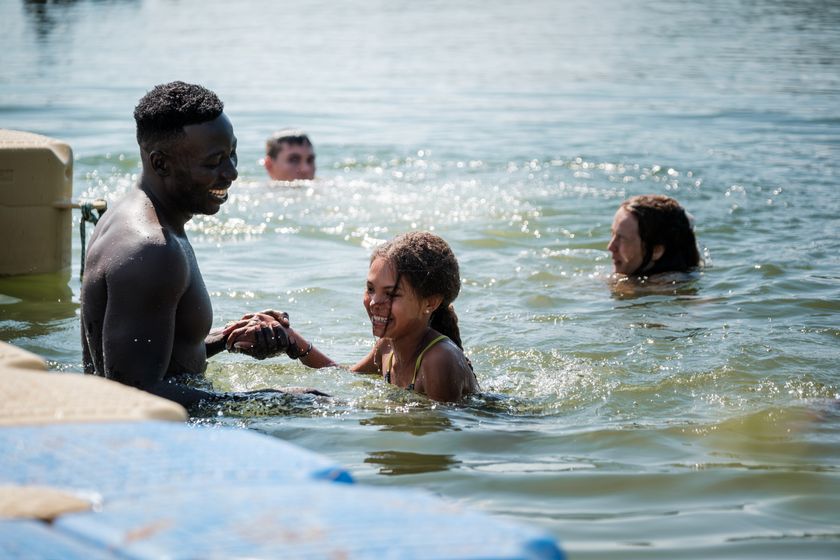
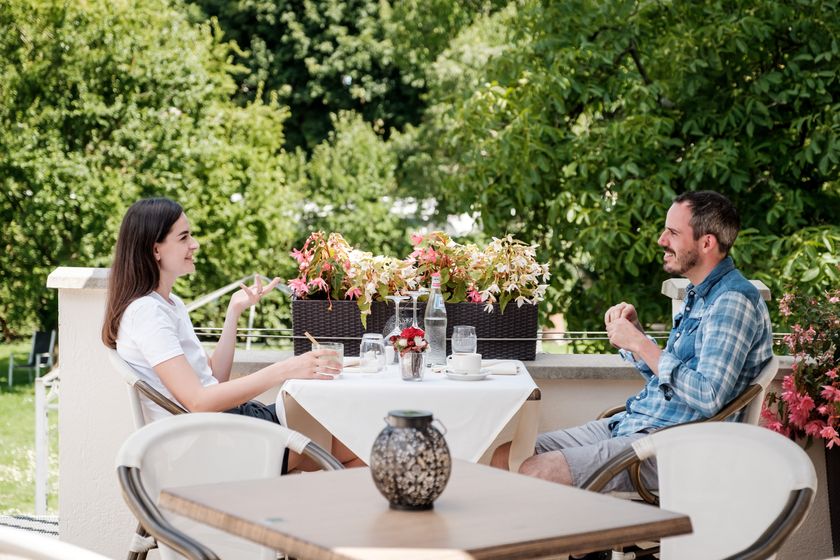
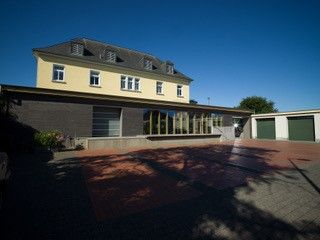
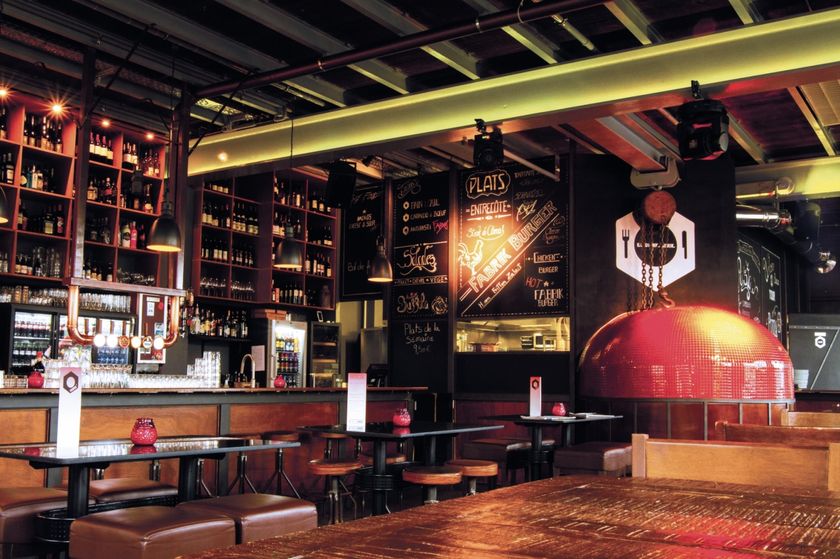
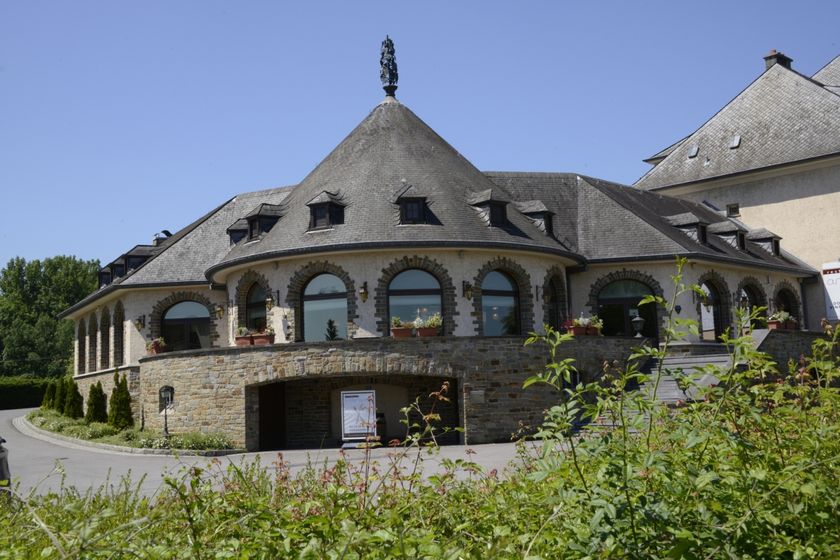
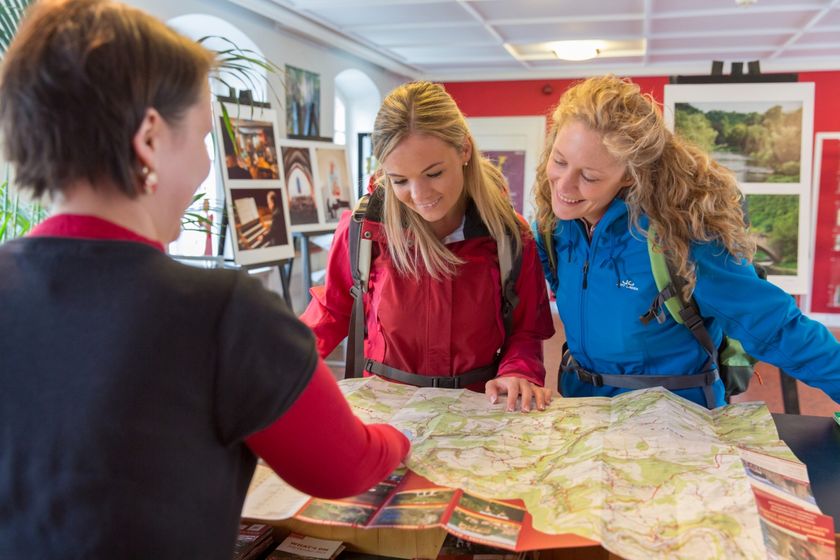
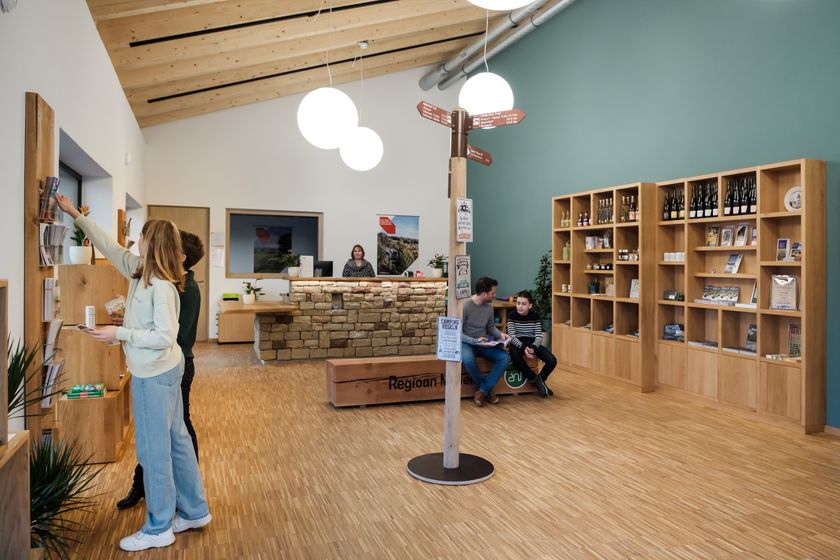
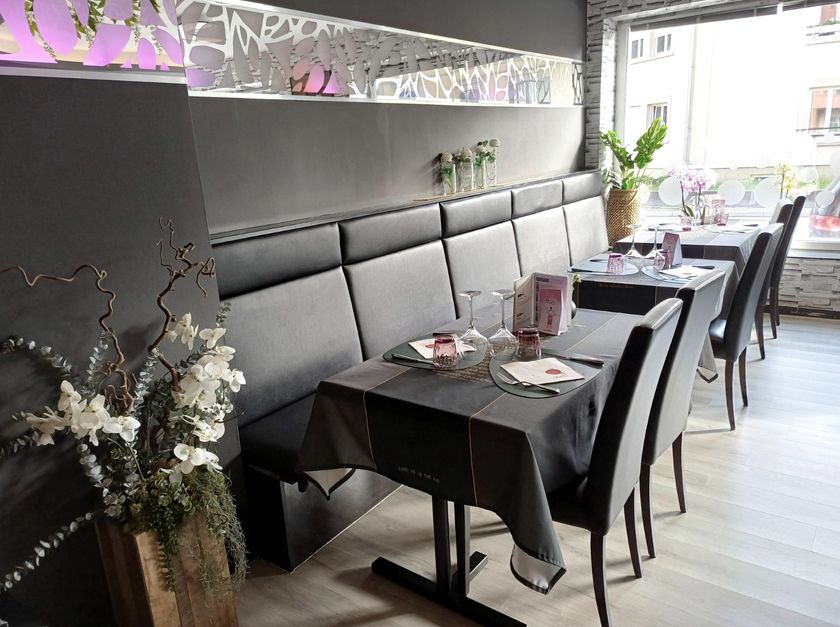
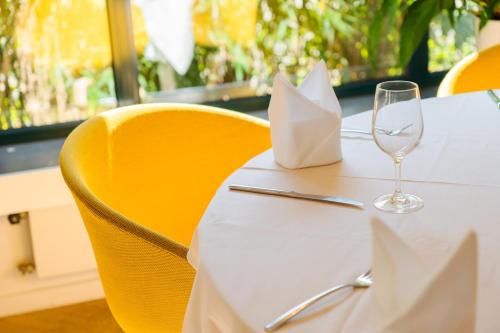
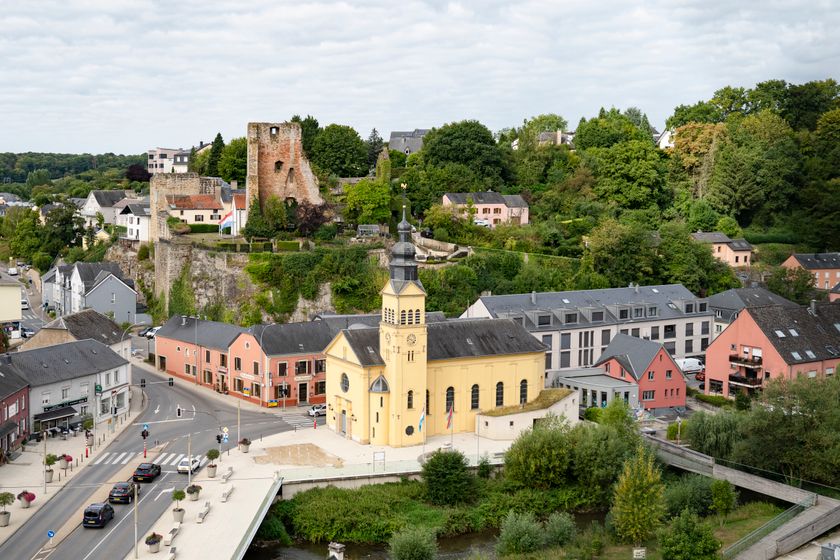
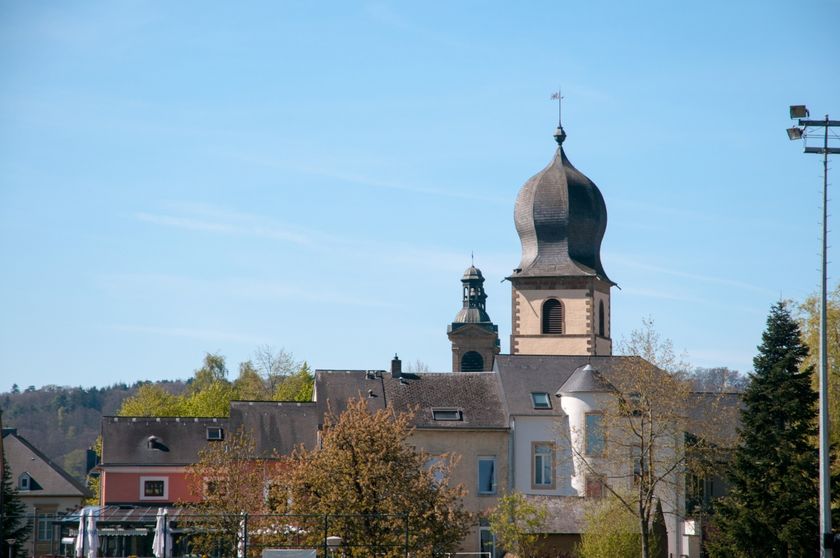
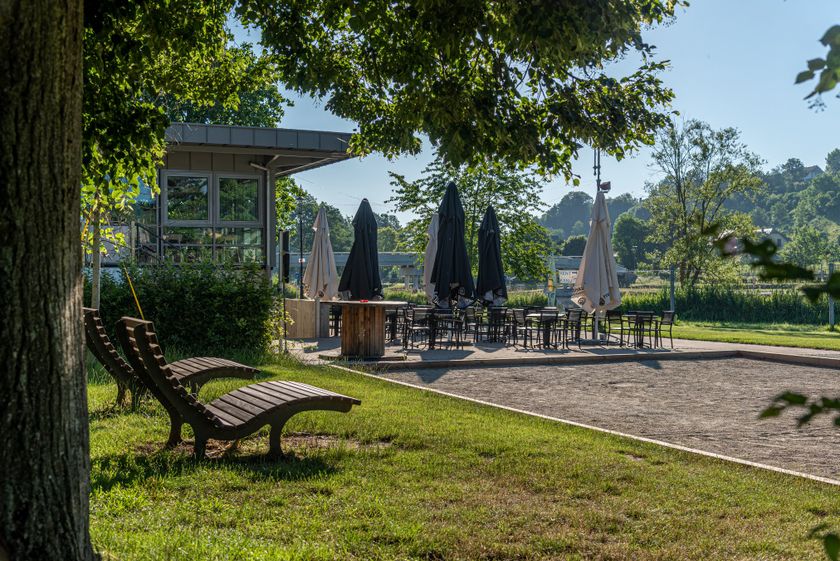
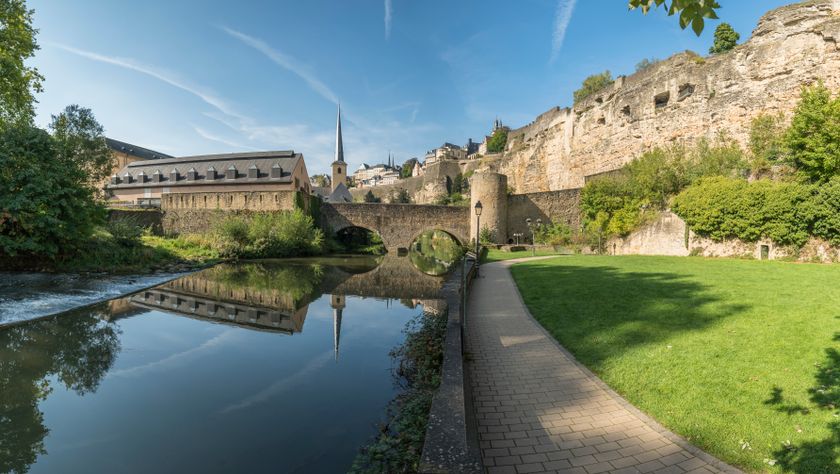
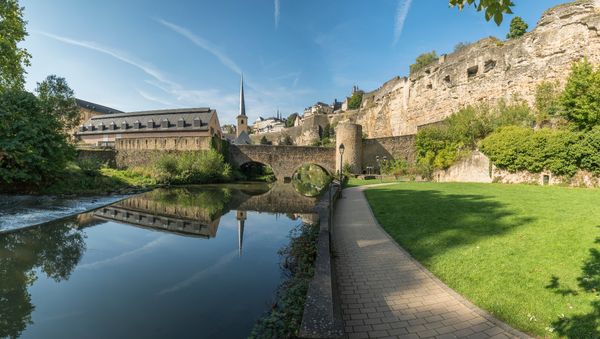
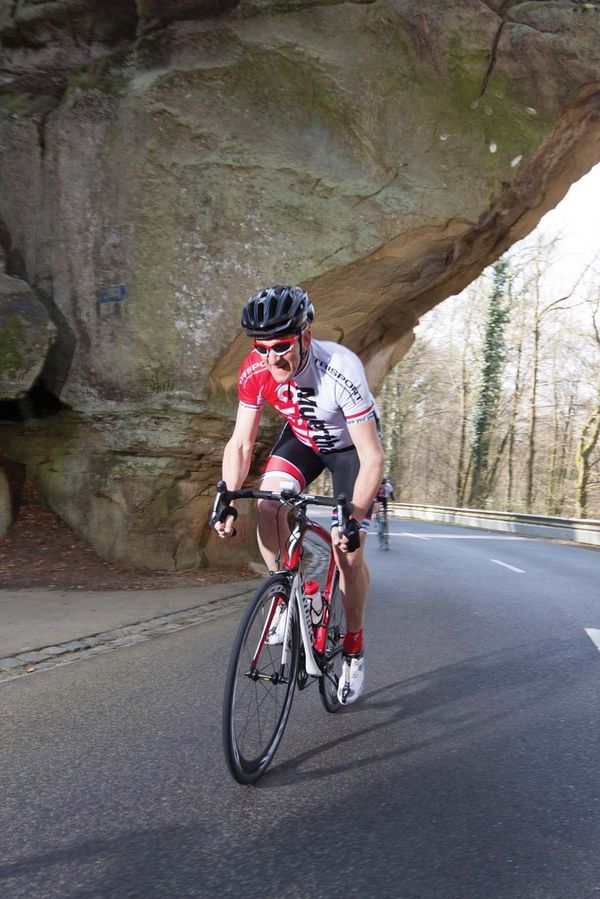
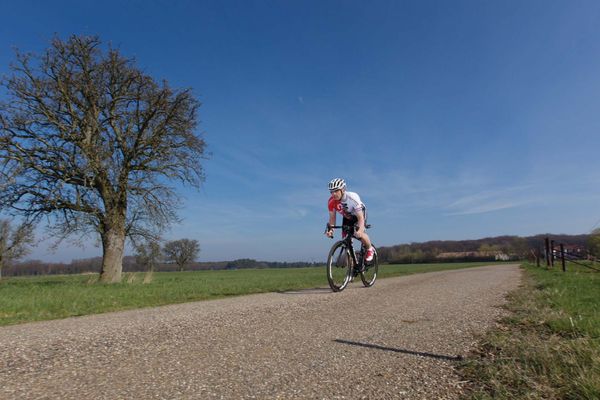
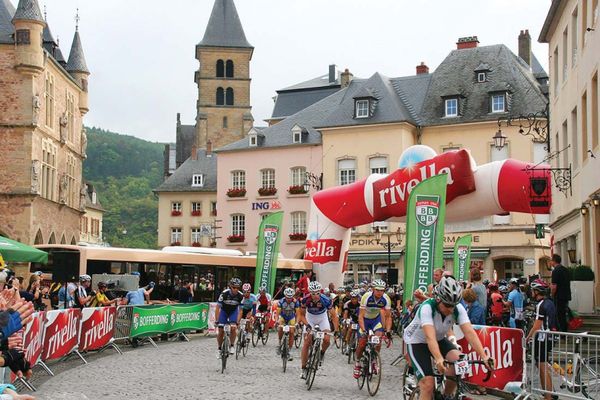
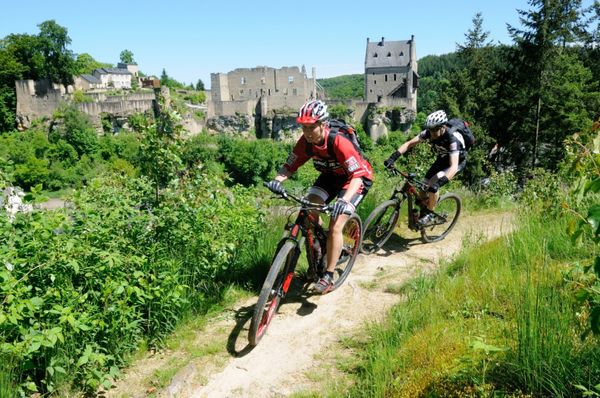
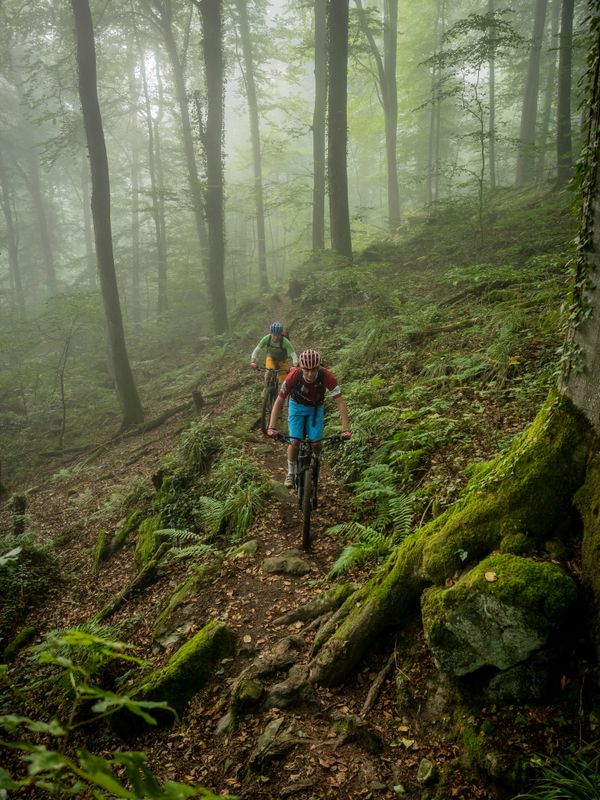
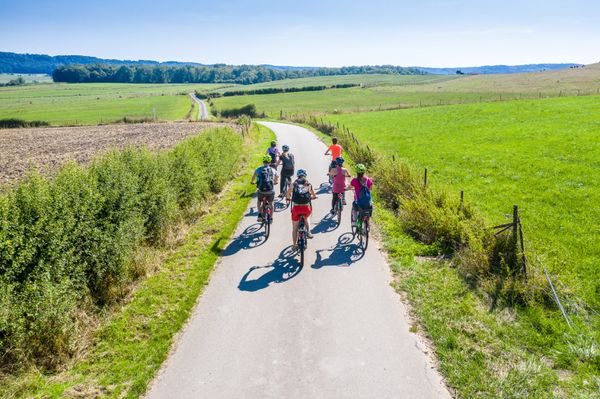
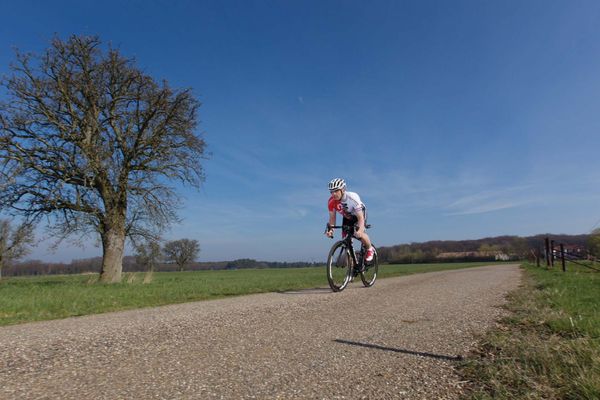
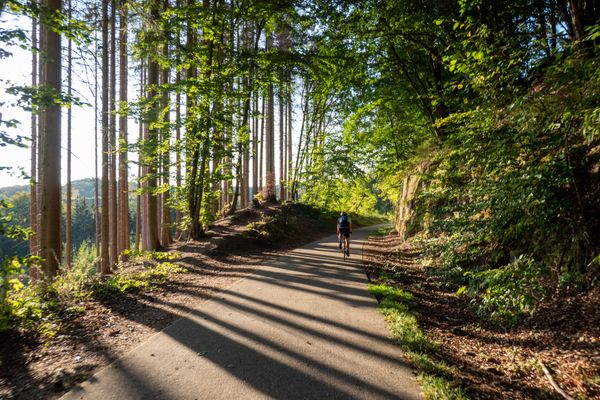
 This website uses technology and content from the Outdooractive Platform.
This website uses technology and content from the Outdooractive Platform.